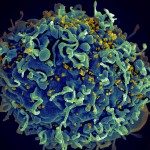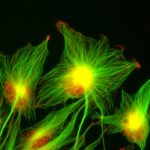Courses
Viral Outbreaks and Pandemics, A One Health Approach MOOC
Understand why viral outbreaks and pandemics are becoming more frequent and how the world is learning to manage emerging infections in a one health approach. The MOOC is directed by Arnaud Fontanet, Pierre-Emmanuel Ceccaldi, […]
Emerging and re-emerging viruses MOOC
This MOOC aims to provide fundamental knowledge about the emerging and re-emerging viruses involved in outbreaks. It illustrates the latest knowledge about the current SARS-CoV-2-Covid-19 pandemic. Register on: https://www.fun-mooc.fr/en/courses/emerging-and-re-emerging-viruses/ Emerging and re-emerging viruses are […]
MOOC Viruses and Human Cancers
The MOOC offers a broad overview of the state of knowledge on viruses associated with cancer, the different mechanisms of carcinogenesis, the host immune response and progress in preventing tumors. Registration on: https://www.fun-mooc.fr/en/courses/viruses-and-human-cancers/ […]
Transversal Projects
Publications
Download-
2023APOBEC3F is a mutational driver of the human Monkeypox virus identified in the 2022 outbreak., J Infect Dis 2023 May; (): .
-
2022APOBEC3C S188I Polymorphism Enhances Context-Specific Editing of Hepatitis B Virus Genome., J Infect Dis 2022 Sep; 226(5): 891-895.
-
2021Frame-shifted APOBEC3A encodes two alternative proapoptotic proteins that target the mitochondrial network., J Biol Chem 2021 Sep; 297(3): 101081.
-
2019Hypoxia-induced human deoxyribonuclease I is a cellular restriction factor of hepatitis B virus., Nat Microbiol 2019 Jul; 4(7): 1196-1207.
-
2019Genotoxic stress increases cytoplasmic mitochondrial DNA editing by human APOBEC3 mutator enzymes at a single cell level., Sci Rep 2019 Feb; 9(1): 3109.
-
2019Elephant APOBEC3A cytidine deaminase induces massive double-stranded DNA breaks and apoptosis., Sci Rep 2019 Jan; 9(1): 728.
-
2018The rabbit as an orthologous small animal model for APOBEC3A oncogenesis., Oncotarget 2018 Jun; 9(45): 27809-27822.
-
2014ADAR1 enhances HTLV-1 and HTLV-2 replication through inhibition of PKR activity, Retrovirology 2014;11:93.
-
2013Human APOBEC3A isoforms translocate to the nucleus and induce DNA double strand breaks leading to cell stress and death, PLoS ONE 2013;8(8):e73641.
-
2013Efficient deamination of 5-methylcytidine and 5-substituted cytidine residues in DNA by human APOBEC3A cytidine deaminase, PLoS ONE 2013;8(6):e63461.
-
+View full list of publications





















